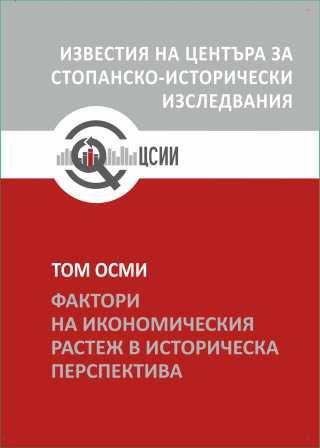CURRENCY REFORMS AND INFLATION IN COMMUNIST AND POST-COMMUNIST BULGARIA
CURRENCY REFORMS AND INFLATION IN COMMUNIST AND POST-COMMUNIST BULGARIA
Author(s): Ralitsa Simeonova-Ganeva, Martin Ivanov, Kaloyan GanevSubject(s): History, Economy, National Economy, Marxist economics, Comparative history, Economic history, History of ideas, Political history, Social history, Recent History (1900 till today), Financial Markets, Human Resources in Economy, Socio-Economic Research
Published by: Център за стопанско-исторически изследвания
Keywords: inflation; currency reform; money in circulation; communism; transition
Summary/Abstract: Here we consider currency reforms, or the compulsory currency exchanges by governments, which were quite common in the first half of the twentieth century. We analyse the effects on inflation of the three currency reforms implemented by the communist regime in Bulgaria after WWII, and of the one that took place during the transition. We provide new evidence on the implemented currency exchanges and compile a time series on the quantity of money in circulation in communist Bulgaria. The collected data and facts show that, contrary to the announced aim to tame inflation through the reduction of liquidity, the three reforms conducted in communist Bulgaria had almost no effect on both money in circulation and inflation. Instead, price stability was achieved through price controls. We emphasize the fact that the growth of money in circulation followed a strong positive trend and exceeded disproportionately the official inflation and output growth. All this generated enormous price pressure and led to the unprecedented inflation rates experienced after the regime collapsed and prices were liberalized. In the following years, high inflation was additionally nurtured by the excessive growth rates of the money supply in the early stages of the transition. Our observations corroborate the fact that the introduction of the currency board arrangement in the summer of 1997 put an end to the high inflationary periods as restrictive monetary and fiscal policies were adopted. We put forward the idea that in 1999, the fourth currency reform played a role in curbing inflation expectations by reducing the scale of price variation. The combined findings of all four reforms confirm the claim that a new currency cannot serve as a tool for combatting inflation per se. It can only be ancillary to reforms establishing fiscal discipline and prudent monetary policies. A side but important finding from the study is that no revaluation of fixed assets was conducted in the 1952 reform, while all other values were considerably reduced. This means that the calculated depreciation was disproportionately higher than the other cost items, which led to significant overestimation of the reported output volumes in the subsequent years and the economic growth rates for 1952–53. Finally, based on the official price-conversion rules, we propose an algorithm for converting values across the different periods.
Journal: Известия на Центъра за стопанско-исторически изследвания
- Issue Year: VIII/2023
- Issue No: 1
- Page Range: 236-251
- Page Count: 16
- Language: English

